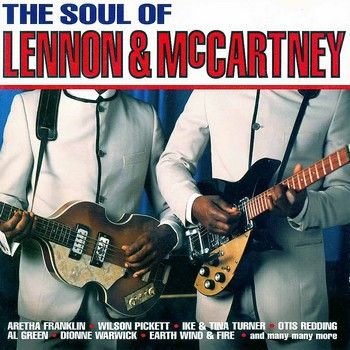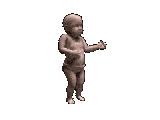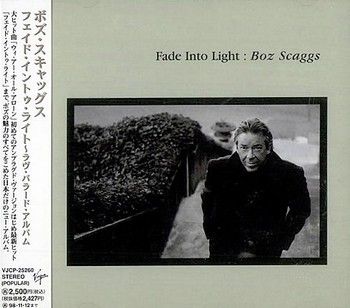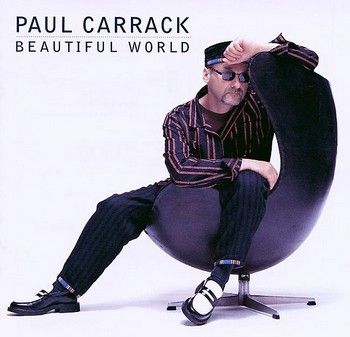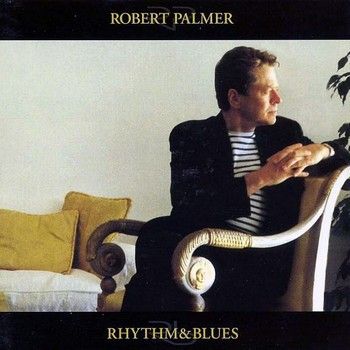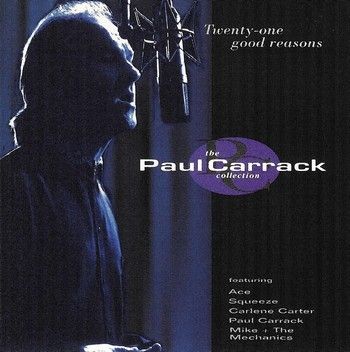
Paul Carrack - Twenty-One Good Reasons: The Paul Carrack Collection - 1994 - ChrysalisA nifty idea for a compilation, Twenty-One Good Reasons: The Paul Carrack Collection gathers not only Carrack's solo hits, but all the major songs by other artists on which he sang lead: Ace's Top Five smash "How Long," Squeeze's new wave classic "Tempted," Mike + the Mechanics' "Silent Running" and the number one ballad "The Living Years," and two duets with country singer Carlene Carter from her 1981 album Blue Nun. As such, it's the definitive overview of Carrack's career. If you're a somewhat anonymous journeyman, you don't stick around as long as Carrack has, or participate in so many different projects, without demonstrating your versatility. Carrack shows himself to be comfortable with bright, bouncy pop, post-new wave roots rock, smooth adult contemporary, and sentimental ballads. But his true forte is the sort of blue-eyed soul that became popular in the post-Hall & Oates era. His clear, soulful pipes are already in evidence on the four selections culled from his tenure with Ace, which bridges into the Squeeze and Carter songs, and then into 12 selections culled from his solo albums. There are a couple of fine Nick Lowe co-writes in "I Live on a Battlefield" and the early hit "I Need You," plus a fine cover of Jackie DeShannon's folk-rock classic "When You Walk in the Room." The high point is Carrack's terrific 1988 Top Ten hit "Don't Shed a Tear," a catchy, modern blue-eyed soul track that fit comfortably into Top 40, adult contemporary, and mainstream rock radio, and even landed him some MTV airplay. Even if Carrack's production is far more synthetic than one usually associates with the term "soul," he proves himself quite a solid stylist over the course of this surprisingly ingratiating collection. © Steve Huey © 2010 Rovi Corporation. All Rights Reserved http://www.allmusic.com/cg/amg.dll?p=amg&sql=10:djfwxqlgldse
Baz "Vinyl man", said on amazon.co.uk, "Paul Carrack is undoubtedly one of the greatest underrated talents this country has ever produced. His list of credits is almost endless yet most people haven't a clue who he is. Best seen live - don't hesitate. He only plays in small venues and is constantly touring so you dont have to wait too long before he will be somewhere near. I must have seen him a dozen times in the last 6 ears or so and he never disappoints. Fabulous voice, pianist, guitarist and song writer and all accompanied by some very decent musicians. If you like quality soul, pop and soft rock all mixed up Paul is your man". The guy is a legend. His name may be unfamiliar to many, but his great soulful voice is one of the most recognizable voices in the rock business. He has been a member of several bands including Warm Dust, Ace, Squeeze, Mike + The Mechanics, and Roxy Music, been a session and touring musician for several others, and has enjoyed success as a solo artist as well. His distinctive voice shows up on some of his affiliated bands' best-known hits, two of the most memorable being "How Long" with Ace, and "Tempted" with Squeeze. Will Paul ever be forgotten for writing Ace's "How Long"? As a result of this song much of Paul's later work has been largely overlooked. Even on some of Paul's "eightyish" AOR style albums, his great voice made some average songs listenable. On his later albums he abstained from the trendy, '80s style dance orientated pop sound, he was becoming accustomed to, and reverted to a more soulful, adult contemporary, pop soul sound, which is the real sound of Paul Carrack. The great vocalist has always been heavily influenced by '60s and '70s soul and pop music. This is a great compilation album, as it arguably includes the great Paul Carrack's strongest songs from his career. The album includes the classic songs, How Long", "Tempted", and "Silent Running". Four of the tracks are from the Ace period, two tracks with Carlene Carter, one track with Squeeze, and two tracks with Mike & The Mechanics. Paul wrote or co-wrote 12 of the 21 tracks. Besides the three classics already mentioned, there are other highlights including covers of Edwin Starr's "Oh How Happy" with Carlene Carter, Graham Lyle & Billy Livsey's "Button Off My Shirt", and Jackie DeShannon's "When You Walk in the Room". Not a dud track on this album from one of Britain's greatest pop/soul vocalists. The album is
VHR by A.O.O.F.C. Search this blog for other Paul Carrack releases
TRACKS /
COMPOSERS /
ARTISTS
1 How Long - Paul Carrack (With Ace)
2 The Real Feeling - Paul Carrack (With Ace)
3 No Future In Your Eyes - Paul Carrack (With Ace)
4 You're All That I Need - Paul Carrack (With Ace)
5 Tempted - Chris Difford/Glenn Tilbrook (With Squeeze)
6 Do Me Lover - Carlene Carter/James Eller/Nick Lowe (With Carlene Carter)
7 Oh How Happy - Edwin Starr (With Carlene Carter)
8 The Rumour - Paul Carrack
9 I Need You - Martin Belmont/Paul Carrack/Nick Lowe
10 Always Better With You - Paul Carrack
11 A Little Unkind - Paul Carrack
12 One Good Reason - Paul Carrack/Chris Difford
13 Don't Shed a Tear - Friedman, R./Eddie Schwartz
14 Button Off My Shirt - Billy Livsey/Graham Lyle
15 When You Walk in the Room - Jackie DeShannon
16 I Live by the Groove - Paul Carrack/Eddie Schwartz
17 Only My Heart Can Tell - Paul Carrack/T-Bone Wolk
18 Battlefield - Paul Carrack/Nick Lowe
19 Loveless - Paul Carrack/T-Bone Wolk
20 Silent Running (On Dangerous Ground) - B.A. Robertson/Mike Rutherford (With Mike & The Mechanics)
21 The Living Years - B.A. Robertson/Mike Rutherford (With Mike & The Mechanics)
MUSICIANSPaul Carrack - Bass Guitar, Keyboards, Vocals, Backing Vocals, Piano, Drums, Horn, Organ (Hammond), Handclapping, Vibraphone
T-Bone Wolk - Synthesizer, Guitar (Acoustic), Mandolin, Guitar (Bass), Guitar (Electric), Handclapping
Winston Delandro, Neil Hubbard, Huw Gower, Tim Renwick, Alan Murphy, Billy Bremner, Martin Belmont - Guitar
Phil Harris - Guitar, Vocals
Rusty Young - Guitar (Steel)
Vinnie Zouma - Guitar (Rhythm)
Robbie McIntosh - Guitar (Electric)
Mike Campbell - Guitar, Guitar (12 String)
Alan "Bam" King - Guitar, Guitar (Rhythm), Vocals
John Woodhead - Guitar, Guitar (Electric), Guitar (Rhythm), Vocals
Chris Difford - Guitar, Guitar (Rhythm), Vocals
James Eller - Guitar, Keyboards, Vocals
Carlene Carter - Guitar, Piano, Vocals
Nick Lowe, Alan Spenner, Kuma Harada - Bass
John Bentley - Bass, Guitar (Bass), Vocals (bckgr)
Mike Rutherford - Bass, Guitar, Vocals
Terry "Tex" Comer - Bass, Vocals
Ed Roynesdal, Paul "Wix" Wickens, Adrian Lee, Sal Gallina, Ian Wherry, B.A Robertson, Derek Austin - Keyboards
Gilson Lavis, Peter Van Hooke, Bobby Irwin, Richard Bailey, Jimmy Bralower, Jeff Seopardie, Andy Newmark - Drums
Fran Byrne - Percussion, Drums
Sammy Figueroa, Tom Lord, Neville Murray, Frank Ricotti, Martin Ditcham, Luis Jardim - Percussion
Mickey Curry - Cymbals, Drums
John Earle, Ray Beavis, Dick Morrisey - Saxophone
Bobby Keys - Tenor Sax
Trevor Lawrence - Tenor Sax, Trombone
Jim Price, Steve Madaio - Trumpet
Mel Collins, Guy Barker, Malcolm Griffiths, Martin Drover, Bud Beadle, Chris Hughes, Mick Eve - Horn
Bob Loveday - Violin
Del Newman - Strings
Paul Young - Vocals, Vocals (bckgr)
John Kirby, Glenn Tilbrook, Dyan Birch, Noel McCalla, Alan "Bam" King, Big Al Downing, Ginny Clee, Bette Bright - Vocals
Alan Carvell, Elvis Costello, Linda Taylor, Jackie Rawe, Joe Lynn Turner, Bernard Fowler, Curtis King, Daryl Hall, Christopher Neil - Vocals (bckgr)
BIO
Paul Carrack was pop music's ultimate journeyman. A vocalist and keyboardist who enjoyed considerable success over the course of his lengthy career while in the service of bands ranging from Ace to Squeeze to Mike + the Mechanics, his finest work often came at the expense of his own identity as a performer; indeed, of the many big hits on which the unassuming singer was prominently featured, only one, 1987's "Don't Shed a Tear," bore his own name. Carrack was born April 22, 1951, in Sheffield, England; he joined the pub rock group Ace in 1972, eventually writing and singing their debut single, "How Long." After reaching the Top 20 in the group's native Britain, the record hit the number-three position in the U.S.; however, after subsequent material failed to match the success of "How Long," Ace disbanded in 1977, and Carrack signed on with country artist Frankie Miller. He soon resurfaced in Roxy Music, appearing on the LPs Manifesto and Flesh and Blood before releasing his solo debut, Nightbird, in 1980. Carrack next joined Squeeze, replacing keyboardist Jools Holland; in addition to contributing to the group's 1981 creative pinnacle East Side Story, he also assumed lead vocal duties on the single "Tempted," their best-remembered hit. However, Carrack's stay in Squeeze was brief, and after working with Nick Lowe he again attempted to forge a solo career with the 1982 LP Suburban Voodoo, cracking the U.S. Top 40 with the single "I Need You." A tenure as a sideman with Eric Clapton followed, and in 1985 he joined Genesis' Mike Rutherford in his side project Mike + the Mechanics. Their hits include "Silent Running (On Dangerous Ground)" and "All I Need Is a Miracle." While remaining a rather anonymous figure at home, Carrack achieved a higher level of visibility in America as a result of Mike + the Mechanics' success; subsequently, his third solo album, One Good Reason, proved to be by far his most popular effort to date, with the single "Don't Shed a Tear" reaching the Top Ten. Another tenure with the Mechanics followed, and with the title track of 1988's The Living Years, the group scored their first number-one hit. After the 1989 Carrack solo LP Groove Approved, Mike + the Mechanics issued 1991's Word of Mouth, which failed to repeat the chart performance of its predecessors; by 1993, Carrack was again a member of Squeeze, appearing on the album Some Fantastic Place and also resuming lead chores for a re-recording of "Tempted." However, he was once again back in the Mechanics' fold for 1995's Beggar on a Beach of Gold; the solo Blue Views was issued the next year, followed in 1997 by Beautiful World. Satisfy My Soul was issued in 2000, his first album for Compass Records. © Jason Ankeny, All Music Guide © 2010 Answers Corporation http://www.answers.com/topic/paul-carrack
